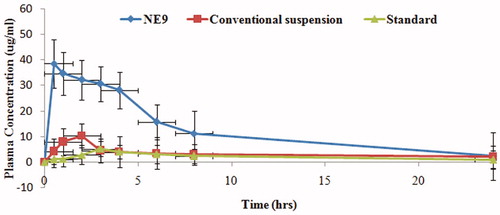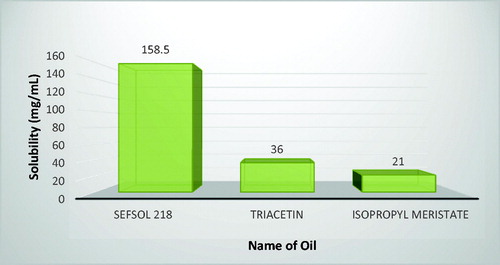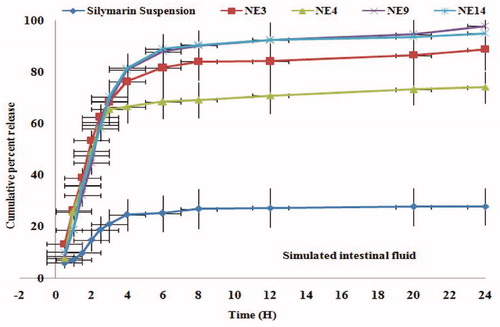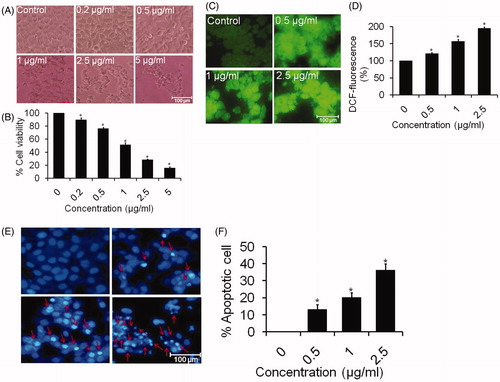Figures & data
Table 1. Treatment schedule of silymarin formulations in male Wistar rats.
Figure 2. Pseudoternary phase diagrams of silymarin nanoemulsions, F1 (Smix 1:0), F2 (Smix 1:1), F3 (Smix 2:1), and F4 (Smix 1:2).

Table 2. Thermodynamic stability tests of prepared nanoformulation.
Figure 3. Silymarin-loaded nanoemulsion: (A) droplet size, (B) transmission electron microscopy, and (C) zeta potential.
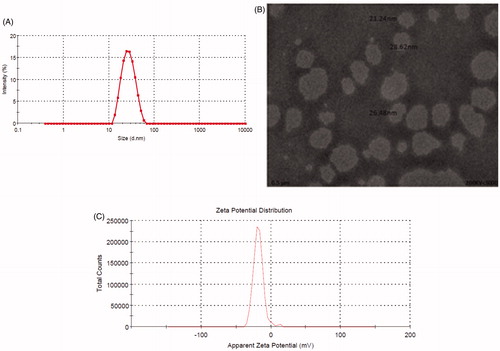
Table 3. Droplet size, poydispersity index, zeta potential, viscosity, refractive index, conductivity, and percent transmittance of selected silymarin nanoemusion formulations.
Table 4. Pharmacokinetic parameters obtained after oral administration of silymarin nanoemulsion and its comparison with standard and conventional suspensions in male Wistar rats (n = 6).
Figure 5. Plasma concentration of various silymarin formulations in male Wistar rats after oral administration.
